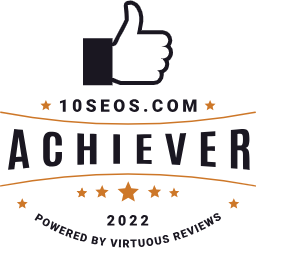Mastering On-Page SEO: Boost Your Website’s Visibility
Welcome to the world of On-Page SEO, where the magic happens to enhance your website’s visibility in search engine results. In today’s digital landscape, a well-optimized website is like a well-lit storefront in a bustling market – it draws people in. So, if you’re keen on getting more organic traffic and reaching a wider audience, this article is your guiding light.
In the previous section, we delved into the fundamentals of On-Page SEO. Now, let’s take a deeper dive and explore some advanced techniques to supercharge your website’s search engine performance.
Understanding On-Page SEO
Imagine your website as a cozy café nestled in a bustling street. On-page SEO is like arranging your café in a way that makes it irresistible to passersby. It involves refining the content and HTML source code of your web pages to align with what both your audience and search engines crave.
Schema Markup: The SEO Secret Sauce
Have you ever noticed those rich snippets that appear in search results with additional information like ratings, reviews, and product prices? That’s the magic of Schema Markup. By implementing structured data using Schema.org vocabulary, you can help search engines understand your content better, leading to more informative and visually appealing search results.
Schema Markup can be applied to various types of content, including products, events, recipes, and more. It’s like giving search engines a detailed map of your website’s content, making it easier for them to deliver relevant results to users.
Page Speed Optimization: The Need for Speed
In the fast-paced digital world, every second counts. If your website takes ages to load, visitors will bounce away faster than you can say “SEO.” Page speed is not just a ranking factor; it’s also crucial for user experience. Slow-loading pages frustrate users and deter them from exploring your site further.
To boost your page speed, consider:
- Compressing Images: Use image compression tools to reduce file sizes without compromising quality.
- Browser Caching: Enable browser caching to store frequently used resources, reducing load times for returning visitors.
- Content Delivery Network (CDN): Utilize a CDN to distribute your website’s content across multiple servers worldwide, ensuring faster loading times for users across the globe.
Voice Search Optimization: Conversational SEO
With the rise of virtual assistants like Siri, Alexa, and Google Assistant, voice search is changing the way people find information online. Voice searches are often longer and more conversational than text-based queries. To optimize for voice search:
- Natural Language Content: Create content that answers common questions using natural language.
- FAQ Pages: Develop FAQ pages that directly address voice search queries.
- Local SEO: Optimize for “near me” searches, as voice searches often have local intent.
Mobile-First Optimization: Catering to Mobile Users
Google has switched to mobile-first indexing, meaning it primarily uses the mobile version of your site for ranking and indexing. Therefore, having a mobile-friendly website is no longer an option; it’s a necessity.
Here’s how to optimize for mobile:
- Responsive Design: Ensure your website design adapts seamlessly to different screen sizes.
- Mobile-Friendly Content: Use concise headings, shorter paragraphs, and larger font sizes for mobile readability.
- Mobile Page Speed: Monitor and optimize your mobile page speed regularly.
Video Content Optimization: Engaging Visuals
Videos are a powerful way to engage your audience and keep them on your site longer. To optimize video content for SEO:
- Video Transcriptions: Provide transcriptions for your videos to make them accessible to search engines.
- Optimize Video Titles and Descriptions: Use relevant keywords in video titles and descriptions.
- Sitemaps: Include videos in your XML sitemap to help search engines discover and index them.
User Experience (UX) Matters
Search engines are increasingly prioritizing user experience in their algorithms. An excellent user experience not only keeps visitors on your site but also sends positive signals to search engines.
- Mobile-Friendly Design: Ensure your website is mobile-responsive.
- Clear Navigation: Make it easy for users to find what they’re looking for.
- High-Quality Content: Offer valuable, well-researched, and engaging content.
Social Signals: Engage with Your Audience
Social signals, such as likes, shares, and comments, can indirectly impact your SEO. When your content is shared and discussed on social media, it can generate more traffic and backlinks, which are favorable for search engine rankings.
- Social Sharing Buttons: Make it easy for users to share your content on social media.
- Engage with Your Audience: Respond to comments and messages to foster a loyal community.
User-Generated Content: Harnessing the Power of Reviews
User-generated content, such as reviews and testimonials, can boost your website’s credibility and visibility.
- Encourage Reviews: Prompt satisfied customers to leave reviews on platforms like Google My Business and Yelp.
- Display Reviews: Showcase positive reviews on your website to build trust with potential customers.
Regular Content Updates: Stay Relevant
Fresh content signals to search engines that your website is active and relevant. Update your content regularly to maintain your SEO ranking.
- Content Calendar: Create a content calendar to schedule regular updates.
- Content Quality: Focus on providing value rather than just churning out posts.
SSL Certificate: Secure Your Website
Security is a growing concern for both users and search engines. Installing an SSL certificate not only encrypts data but also boosts your SEO rankings.
Long-Form Content: In-Depth Insights
Long-form content not only provides in-depth information to your readers but also tends to perform better in search engine rankings. When you delve deep into a topic, you demonstrate expertise and authority, which search engines reward.
- Comprehensive Guides: Create comprehensive guides and articles that thoroughly cover a subject.
- Keyword Research: Conduct keyword research to identify long-tail keywords and topics with high search volume.
Internal Linking Strategy: Navigating the Web of Your Content
Internal links connect different pages on your website, making it easier for users and search engines to navigate your content. An effective internal linking strategy can:
- Boost SEO: Spread link authority throughout your site, helping pages rank higher.
- Improve User Experience: Encourage users to explore more of your content.
- Establish Content Hierarchy: Show the importance of different pages within your website.
Page Optimization for Featured Snippets
Featured snippets are those nifty boxes that appear at the top of some search results, providing a quick answer to the user’s query. To optimize for featured snippets:
- Structured Content: Organize your content in a structured manner with clear headings and bullet points.
- Answer Questions Concisely: Anticipate common queries and provide concise answers.
Accelerated Mobile Pages (AMP): Lightning-Fast Mobile Experience
AMP is an open-source framework that ensures web pages load almost instantly on mobile devices. Implementing AMP can significantly enhance your mobile user experience and, consequently, your SEO.
- AMP-Ready Pages: Create AMP versions of your pages for mobile users.
- Improved Rankings: Google often prioritizes AMP pages in mobile search results.
User Behavior Analysis: Data-Driven Optimization
Understanding how users interact with your website can guide your optimization efforts. Analyze user behavior using tools like Google Analytics to identify areas for improvement.
- Bounce Rate Reduction: Work on reducing bounce rates by providing engaging content and clear calls to action.
- Conversion Tracking: Set up conversion tracking to measure the effectiveness of your content in achieving your goals.
Rich Snippets and Structured Data
Enhance your search results by incorporating rich snippets and structured data markup. This can make your listings more visually appealing and informative, potentially increasing click-through rates.
- Review Ratings: Add review ratings, star ratings, and review counts to your products and services.
- Event Information: Include event details like dates, times, and locations for events on your website.
International SEO: Going Global
If your target audience spans multiple countries, international SEO is essential. It involves optimizing your website to rank well in different regions and languages.
- Hreflang Tags: Implement hreflang tags to specify the language and geographic targeting of your pages.
- Geographic Keyword Research: Research keywords specific to the regions you’re targeting.
Image Optimization: Pictures Worth a Thousand Words
Images are an integral part of web content. Optimizing them not only improves user experience but also contributes to your SEO efforts.
- Alt Text: Always include descriptive alt text for images to make them accessible and understandable to search engines.
- Image Compression: Reduce image file sizes without compromising quality to speed up page loading times.
Semantic SEO: The Power of Context
Semantic SEO focuses on understanding the context and intent behind search queries. It involves creating content that aligns with user intent.
- Latent Semantic Indexing (LSI) Keywords: Identify LSI keywords related to your main keyword to provide more comprehensive information.
- Content Relevance: Ensure your content is highly relevant to the topic you’re covering.
AI-Powered SEO Tools
Harness the power of artificial intelligence (AI) and machine learning to assist in your SEO efforts. These tools can help with keyword research, content optimization, and even predicting trends.
- Keyword Research: AI tools can provide insights into keyword competitiveness and suggest related keywords.
- Content Generation: Some AI tools can assist in generating content ideas and even drafting articles.
Incorporating these advanced On-Page SEO techniques into your strategy can give you a competitive edge in the ever-evolving digital landscape. Remember that SEO is a continuous process, and staying up-to-date with the latest trends and technologies is key to long-term success. So, keep experimenting, analyzing, and optimizing to maintain and improve your website’s visibility in search engine results. Happy optimizing!




